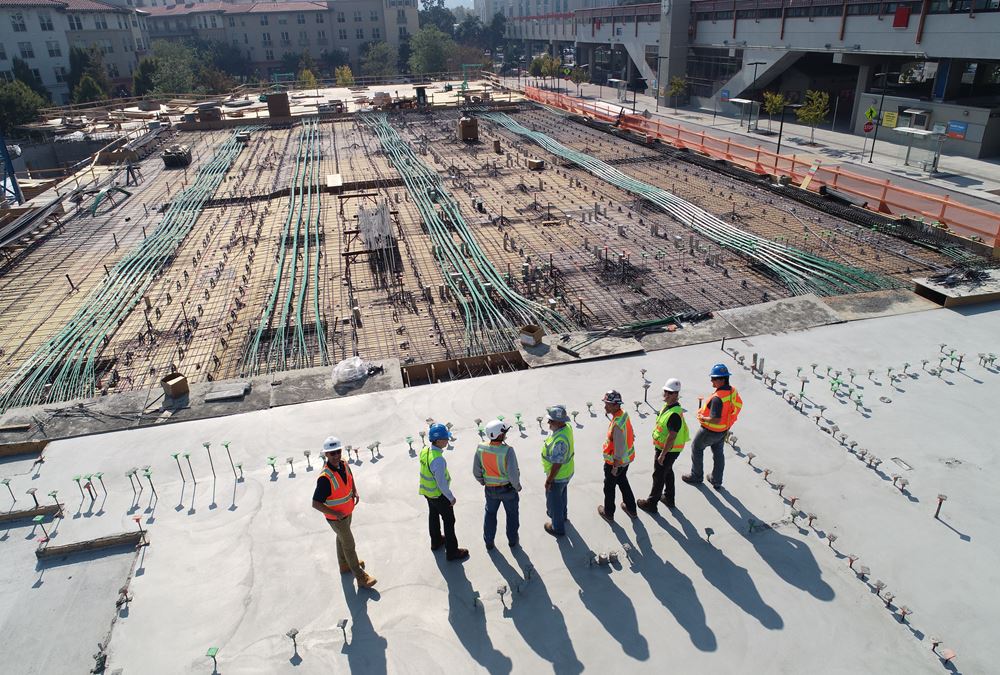- Home
- Business Processes
- Industry Knowledge
- Aerospace Industry
- Automotive Industry
- Banking Domain
- BFSI Industry
- Consumer/ FMCG Industry
- Chemicals Industry
- Engineering & Construction
- Energy Industry
- Education Domain
- Finance Domain
- Hospitality Domain
- Healthcare Industry
- Insurance Domain
- Retail Industry
- Travel and Tourism Domain
- Telecom Industry
- Leadership Skills
- eLearning
- Home
- Domain Knowledge
- Engineering & Construction
- Construction Industry – The Sectors
Construction Industry – The Sectors
The construction industry produces a wide range of products, and the enterprises working in the construction domain are equally diverse. The construction industry can be divided into three sectors of construction namely building, infrastructure, and industrial. They can be further classified as residential, non-residential, and engineering projects. The construction activity can be carried out as a private or public endeavor.
The following three fundamental sectors of the construction industry deliver economic and social infrastructure to all parts of the economy.
1. Building Construction
Building construction is the process of adding structures to areas of land. Typical construction activities are undertaken by the owner of the property and in some cases, land may be compulsorily purchased from the owner for public use. Building construction is usually further divided into residential and non-residential. The vast majority of building construction jobs is small renovations, such as the addition of a room, or renovation of a bathroom. Often, the owner of the property acts as a laborer, paymaster, and design team for the entire project. However, all building construction projects include some elements in common – design, financial, estimating, and legal considerations.
Commercial building construction is procured privately or publicly utilizing various delivery methodologies, including cost estimating, hard bid, negotiated price, traditional, management contracting, construction management-at-risk, design & build, and design-build bridging.
2. Infrastructure Construction
Infrastructure, also called heavy civil or heavy engineering, includes large public works, dams, bridges, highways, railways, water or wastewater, and utility distribution. Civil engineering covers the design, construction, and maintenance of the physical and naturally built environment, including public works such as roads, bridges, canals, dams, tunnels, airports, water and sewerage systems, pipelines, and railways.
3. Industrial Construction
Industrial construction, though a relatively small part of the entire construction industry, is a very important component. Industrial construction includes offshore construction (mainly of energy installations), mining and quarrying, refineries, chemical processing, power generation, mills, and manufacturing plants.
Owners of these projects are usually large, for-profit, industrial corporations. These corporations can be found in such industries as Infrastructure, Power Transmission & Distribution, metallurgical and material handling, medicine, petroleum, chemical, power generation, manufacturing, etc. Processes in these industries require highly specialized expertise in planning, cost estimating, design, and construction. As in building and heavy/highway construction, this type of construction requires a team of individuals to ensure a successful project often undertaken by big construction companies.

Types of Construction Projects
Each type of construction project requires a unique team to plan, design, construct, and maintain the project. In general, there are three primary types of construction projects:
1. Residential projects
Residential projects is projects around homes, housing developments, buildings, and garages. Residential construction may be undertaken by individual land-owners (self-build), by specialist house-builders, by property developers, by general contractors, or by providers of public or social housing (eg: local authorities, housing associations). Residential construction practices, technologies, and resources must conform to local building authority regulations and codes of practice.
2. Nonresidential Projects
These projects include large and small commercial buildings, including stores, churches, schools, and hospitals. Depending upon the type of building, non-residential building construction can be procured by a wide range of private and public organizations, including local authorities, educational and religious bodies, transport undertakings, retailers, hoteliers, property developers, financial institutions, and other private companies. Most construction in these sectors is undertaken by general contractors.
3. Engineering projects
Engineering projects include the construction of bridges, roads, reservoirs, large public works, dams, highways, railways, water or wastewater, and utility distribution. Civil engineering covers the design, construction, and maintenance of such big projects.
Classification of Construction projects
Construction projects can be further classified as public and private.
1. Private Construction & Renovation
This is construction work performed for private owners, paid for using private funds. As cities become saturated with buildings, renovation and restructuring will become a common part of the building trades. These construction projects could also be small renovations or repair jobs, where the owner may act as a designer, paymaster, and laborer for the entire project.
2. Public Projects & Renovation
These projects are completed for federal, state, or local agencies of government and usually paid for out of tax money, bonds, or other public funds. In the U.S., road and bridge systems need repairs and needed to keep the vast transportation network in a usable condition.
Activities at Construction Project
Each agency associated with the above sub-group of activities has its own particular organizational set up compatible with the nature of its workload. The detailing will depend upon the size, geography of are of interest, nature of activities, and complexity of the problems faced by it. Broadly speaking, the basic activities at a construction project can be grouped into three main categories:
1. Designing and Planning
Construction planning is the specific process construction managers use to lay out how they will manage and execute a construction project, from designing the structure to ordering materials to deploying workers and subcontractors to complete various tasks. Construction planning involves identifying all the required steps to build a structure, splitting them into defined activities, ordering these steps logically, and determining the necessary materials, manpower, and equipment.
2. Construction Execution
Construction execution refers to standards, methods, and practices used during the construction phase of a project to successfully deliver the object that is being constructed. Providing direction to labor, meeting all the regulatory requirements, and supervision of a project from early development to completion is part of the execution phase. The ultimate goal of construction is to deliver the project to the full satisfaction of the client’s demands both in terms of functionality and budget.
3. Inspection and Supervision
Inspection and supervision are required at every step to make sure that the required tasks are being performed required to complete the construction activities. Progress is constantly monitored and changes are being made accordingly. The construction project manager spends most of the time in the step of monitoring and depending on the information that he gets redirects the tasks and maintains the control of the project.
The use of various new technologies and deployment of project management strategies has made it possible to undertake projects of mega-scale. In its path of advancement, the industry has to overcome a number of challenges. However, the industry is still faced with some major challenges, including housing, disaster-resistant construction, water management, and mass transportation.
Related Links
You May Also Like
-
Importance of Construction Industry
The construction industry is an important part of the country's economy. Construction is an important sector that contributes greatly to the economic growth of a nation. The construction industry has laid down the physical and technological foundations upon which modern civilization has developed. It also creates investment opportunities across various related sectors and vital to the achievement of national socio-economic objectives.
-
Construction Industry in India
India is one of the world's fastest-growing construction markets, rising at the rate of 7-8 percent annually. By 2025, India will become the third-largest market in the world, thereby becoming a key driver for the Indian economy. The Indian construction industry employs over 30 million people and creates assets worth over ₹ 200 billion. Indian Construction Industry consists of 200 firms in the corporate sector.
-
Construction Industry – The Sectors
The construction industry produces a wide range of products, and the enterprises working in the construction domain are equally diverse. The construction industry can be divided into three sectors of construction namely building, infrastructure, and industrial. They can be further classified as residential, non-residential, and engineering projects. The construction activity can be carried out as a private or public endeavor.
-
Overview of Construction Industry
Construction is the oldest and one of the largest industries in the world with its market size of about ten trillion US dollars. Construction is traditionally a contracting business right from the good old days, the industry comprises of a very large number of small firms. Now the construction industry is one of the largest industries in any economy. It makes a significant contribution to the national economy and provides employment to a large number of people.
-
Challenges in Construction Industry
In spite of the steady rise of the construction industry and its demand, it remains heavily dependent on manual labor. The construction industry faces challenges that become even more for developing countries. Some key challenges are poor productivity, inflation, and rising costs, availability of skilled labor and increased competition, and shrinking profit margins.
-
Roles in Construction Industry
In general, there are various groups of stakeholders involved in a construction project. Each group contributing a specific component, examples are the owner group, the engineering group, and the construction group. In this article, we take a look at different roles that exist within the ambit of the construction industry.
-
Features of Construction Industry
Construction projects (activities) have some unique features with respect to other industrial projects. The construction industry is a unique industry with its own inherent complications that involves multiple stakeholders and agencies. Dependent on contractors and seasonal labor-force it has multiple linkages with other industries. Productivity and safety hazards are peculiar to this industry.
-
Construction Industry – Business Model
The business model for the construction industry tells the story about how the industry works, defining who the target customers are, how the business makes money, and what the customer values. Most of the construction projects originate by clients as concepts of public or private utility, and actually delivered by many players in the industry.
Explore Our Free Training Articles or
Sign Up to Start With Our eLearning Courses

About Us
Learning
© 2023 TechnoFunc, All Rights Reserved








